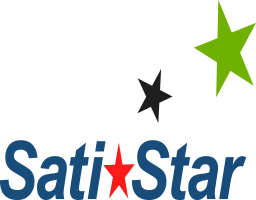Toyota Production Systems
Overview
The Toyota Production System (TPS) is the framework and philosophy organizing the manufacturing facilities at Toyota and the interaction of these facilities with their suppliers and customers. It was largely created by three men: the founder of Toyota, Sakichi Toyoda, his son Kiichiro Toyoda, and chief engineer Taiichi Ohno.
A comprehensive approach that improves long-term profitability by implementing actions that results in increasing revenues, while concurrently working on actions that reduce costs.
Scope And Deliverables
Toyota was able to greatly reduce cost and inventory using the TPS, enabling it to become one of the ten largest companies in the world. The TPS is a classic example of the Kaizen approach to productivity improvement. Due to this stellar success of the production philosophy many of these methods have been copied by other manufacturing companies. TPS is also known more generically as Lean manufacturing.
The main goal of the TPS is to eliminate waste (Muda). Toyota defines seven categories or types of waste.
- Defects (the effort involved in inspecting for and fixing defects)
- Overproduction (making more than what is needed, or making it earlier than needed)
- Transportation (moving products further than is minimally required)
- Waiting (products waiting on the next production step, or people waiting for work to do)
- Inventory (having more inventory than is minimally required)
- Motion (people moving or walking more than minimally required)
- Excess processing (doing more than the customer values)
Lean and Toyota Production System (TPS) concepts have also been applied successfully in software development. In software engineering the process begins with a requirement review, to eliminate unnecessary requirements, and substitute mechanical and electrical components with software. Software generally has a lower per-component cost than other disciplines, especially in the large production runs typical of a lean product. The design then attempts to eliminate costly software components, especially those that are purchased.
What We Will Do
SatiStar’s knowledgeable consultants will provide guidance to your entire leadership team on the effective implementation of the 14 Principles of the Toyota Production System:
Section I. Long Term Philosophy
- Principle 1: Base your management decisions on a long-term philosophy, even at the expense of short-term financial goals.
Section II. The Right Process Will Produce the Right Results
- Principle 2: Create continuous process flow to bring problems to the surface
- Principle 3: Use the “Pull” system to avoid overproduction
- Principle 4: Level out the workload (Heijunka)
- Principle 5: Build a culture of stopping to fix problems, to get quality right the first time
- Principle 6: Standardized tasks are the foundation for continuous improvement and employee empowerment
- Principle 7: Use visual controls so no problems are hidden
- Principle 8: Use only reliable, thoroughly tested technology that serves your people and processes
Section III. Add Value to the Organization by Developing Your People and Partners
- Principle 9: Grow leaders who thoroughly understand the work, live the philosophy, and teach it to others
- Principle 10: Develop exceptional people and teams who follow your company’s philosophy
- Principle 11: Respect your extended network of partners and suppliers by challenging them and helping them improve
Section IV. Continuously Solving Root Problems Drives Organizational Learning
- Principle 12: Go and see for yourself to thoroughly understand the situation (Genchi Genbutsu)
- Principle 13: Make decisions slowly by consensus, thoroughly donsider all options; implement decisions rapidly
- Principle 14: Become a learning organization through relentless reflection (Hansei) and continuous improvement (Kaizen)
What We Need You To Do
- Commit to implementing the Toyota Production System.
- Assign key project Champions, Team Leaders, Team Members, Trainers as required.
- Create and deploy a TPS-based vision for the future of your operations.
- Enroll the entire organization in the effort.
- Set up and conduct periodic Steering Committee meetings to ensure appropriate leadership of the effort.
- Measure and track overall progress.
WHAT PEOPLE ARE SAYING
SatiStar's Experience Makes The Difference!
